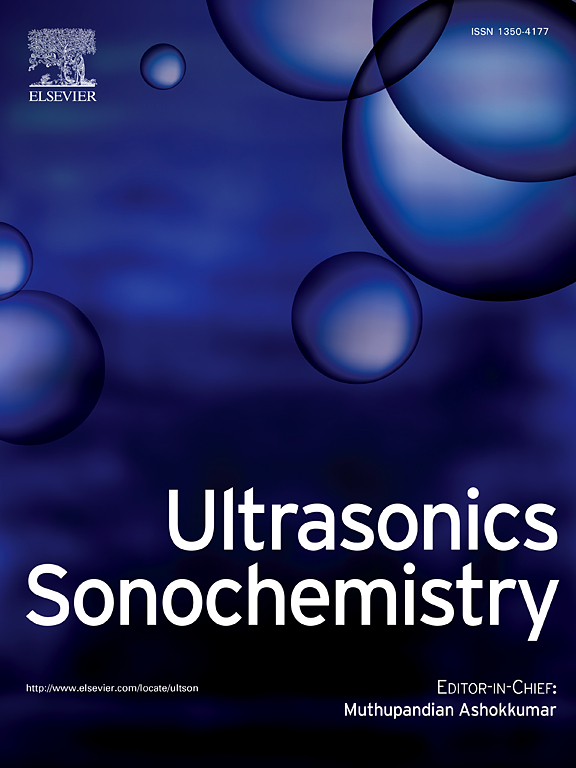20 L多扫频超声反应器加速黄酒成熟及其机理探讨
IF 8.7
1区 化学
Q1 ACOUSTICS
引用次数: 0
摘要
中国传统米酒的风味形成需要一个漫长的陈酿过程。为了加速黄酒的成熟,本研究采用20 L规模的多扫频型超声反应器,探讨其促进作用。以20/28/40 kHz为频率,分别在单/双/三频率、固定模式和扫频模式下对黄酒进行10种组合超声处理。然后将样品在室温下陈化180天。经40 kHz、50 W/L强度、30℃、15 min的固定超声处理后的黄酒样品中总酯含量比未处理的黄酒样品提高了7.3%。经超声处理并保存6个月后,挥发性酯含量比未经超声处理并保存6个月的黄酒增加了286.78%。黄酒中总挥发性醇和总挥发性醛分别减少了12.95%和67.46%,总挥发性酸分别增加了17.11%。研究结果还表明,超声波诱导的自由基对黄酒性能的变化有一定的影响。并观察了声空化与风味形成的关系。本文章由计算机程序翻译,如有差异,请以英文原文为准。
Accelerating maturation of Chinese rice wine by using a 20 L scale multi-sweeping-frequency mode ultrasonic reactor and its mechanism exploration
The formation of flavor in traditional Chinese rice wine requires a long aging process. To accelerate the maturation of rice wine, a 20 L scale multi-sweeping- frequency mode ultrasonic reactor was employed in this study to explore the promoting effects. Rice wines were subjected under 10 combined types of sonication treatments with 20/28/40 kHz in single/double/triple frequencies, and in fixed or sweeping modes, respectively. Then samples were aged in room temperature for up to 180 days. A 7.3 % increase of total esters content was observed in rice wine sample after treated by a fixed 40 kHz ultrasonication with 50 W/L intensity at 30 °C for 15 min, compared with the untreated sample. After sonication and stored for six months, 286.78 % increase of the volatile esters was found, compared to rice wine without ultrasoinc treatment and stored at same condition for same time. And the total volatile alcohol substances and total volatile aldehydes in rice wine decreased by 12.95 % and 67.46 %, while the total volatile acids increased by 17.11 %, respectively. The research results also demonstrated that ultrasonic induced free radicals accounted for the variations of rice wine properties. And the correlation between the acoustic cavitation and the flavor formation was also observed.
求助全文
通过发布文献求助,成功后即可免费获取论文全文。
去求助
来源期刊

Ultrasonics Sonochemistry
化学-化学综合
CiteScore
15.80
自引率
11.90%
发文量
361
审稿时长
59 days
期刊介绍:
Ultrasonics Sonochemistry stands as a premier international journal dedicated to the publication of high-quality research articles primarily focusing on chemical reactions and reactors induced by ultrasonic waves, known as sonochemistry. Beyond chemical reactions, the journal also welcomes contributions related to cavitation-induced events and processing, including sonoluminescence, and the transformation of materials on chemical, physical, and biological levels.
Since its inception in 1994, Ultrasonics Sonochemistry has consistently maintained a top ranking in the "Acoustics" category, reflecting its esteemed reputation in the field. The journal publishes exceptional papers covering various areas of ultrasonics and sonochemistry. Its contributions are highly regarded by both academia and industry stakeholders, demonstrating its relevance and impact in advancing research and innovation.
 求助内容:
求助内容: 应助结果提醒方式:
应助结果提醒方式:


